Welcome to our latest ‘Postcard from Ireland’ where the Irish Family History Centre try and give you a flavour of some of the new or lesser known museums/exhibitions and attractions in Dublin and further afield in Ireland.
As people get ready to celebrate Easter and are enjoying the brighter evenings of spring we thought we would investigate the growing Irish Whiskey – uisce beatha (water of life) in gaelic, -revival. Irish whiskey was once the most popular spirit in the world, the Liberties area in Dublin was the centre of brewing and distilling, with the largest concentration of producers in Ireland.
However a decline took place from the late 19th century onwards. Ireland had over 30 distilleries in the 1890s, a century later, this number had fallen to just three. In recent years along with the renewal of popularity of Irish Whiskey, this historic area of Dublin is returning to its roots with a number of distilleries opening and beginning to produce a variety of spirits for all tastes.
We wanted to highlight the ‘Pearse Lyons Distillery’, which is an absolute gem and unusually located in the restored church.
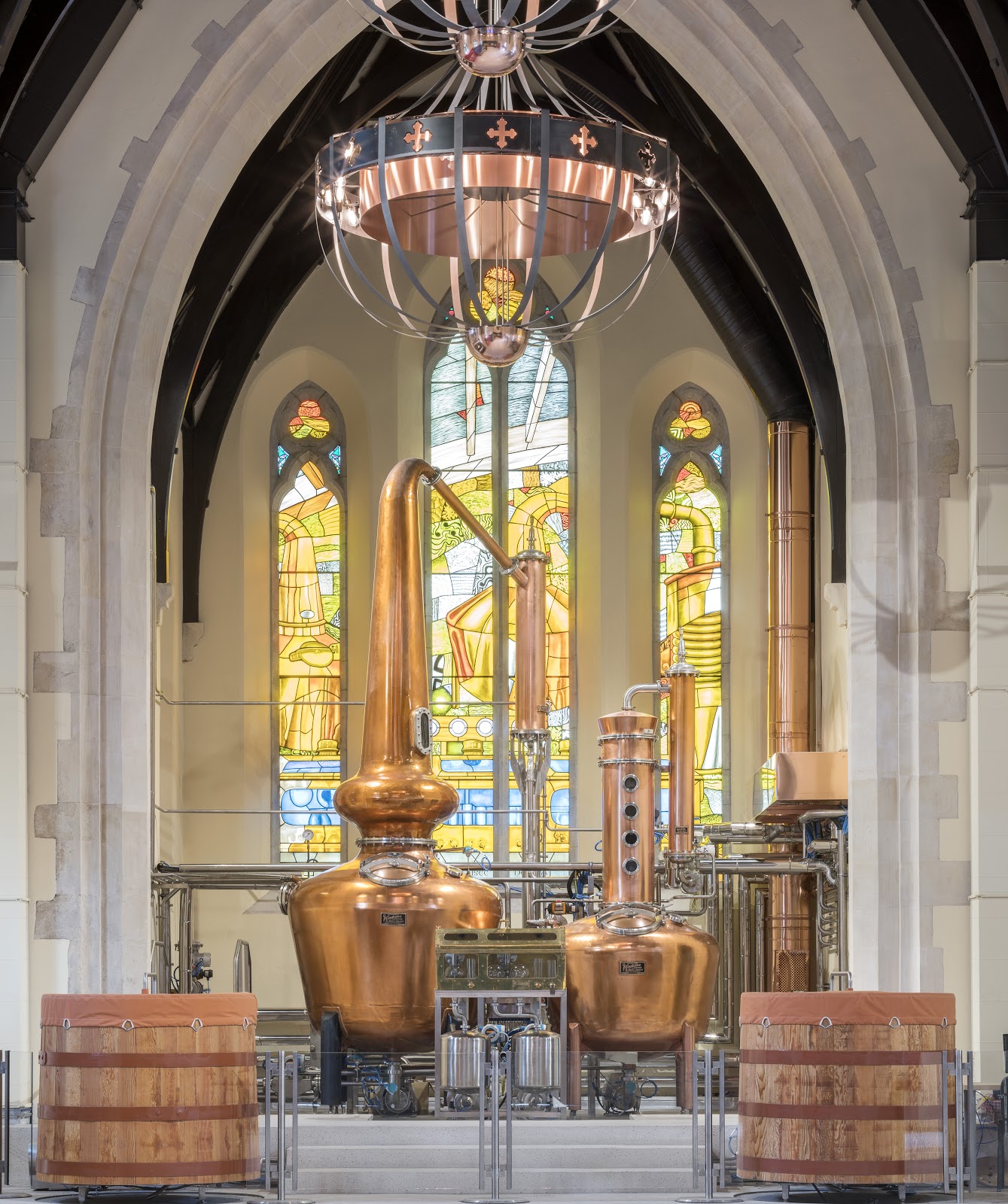
Pearse Lyons Distillery Interior Shot
The combination of history and whiskey at Pearse Lyons is extraordinary. St. James Church and graveyard was founded in 1190AD and by approximately 1212AD had established a hospice for pilgrims travelling the camino to Santiago de Compostela in Spain. Having experienced centuries of history and 100,000 burials, by 2013 the Church was in major disrepair including a spire that had been removed due to damage. In that year St. James was acquired by Irishman, and founder of Alltech animal nutrition group, Dr. Pearse Lyons. In his own words, “Rarely in life does one get the opportunity to be involved in the restoration of a truly iconic church and at the same time create a distillery that reflects a location’s rich history”.
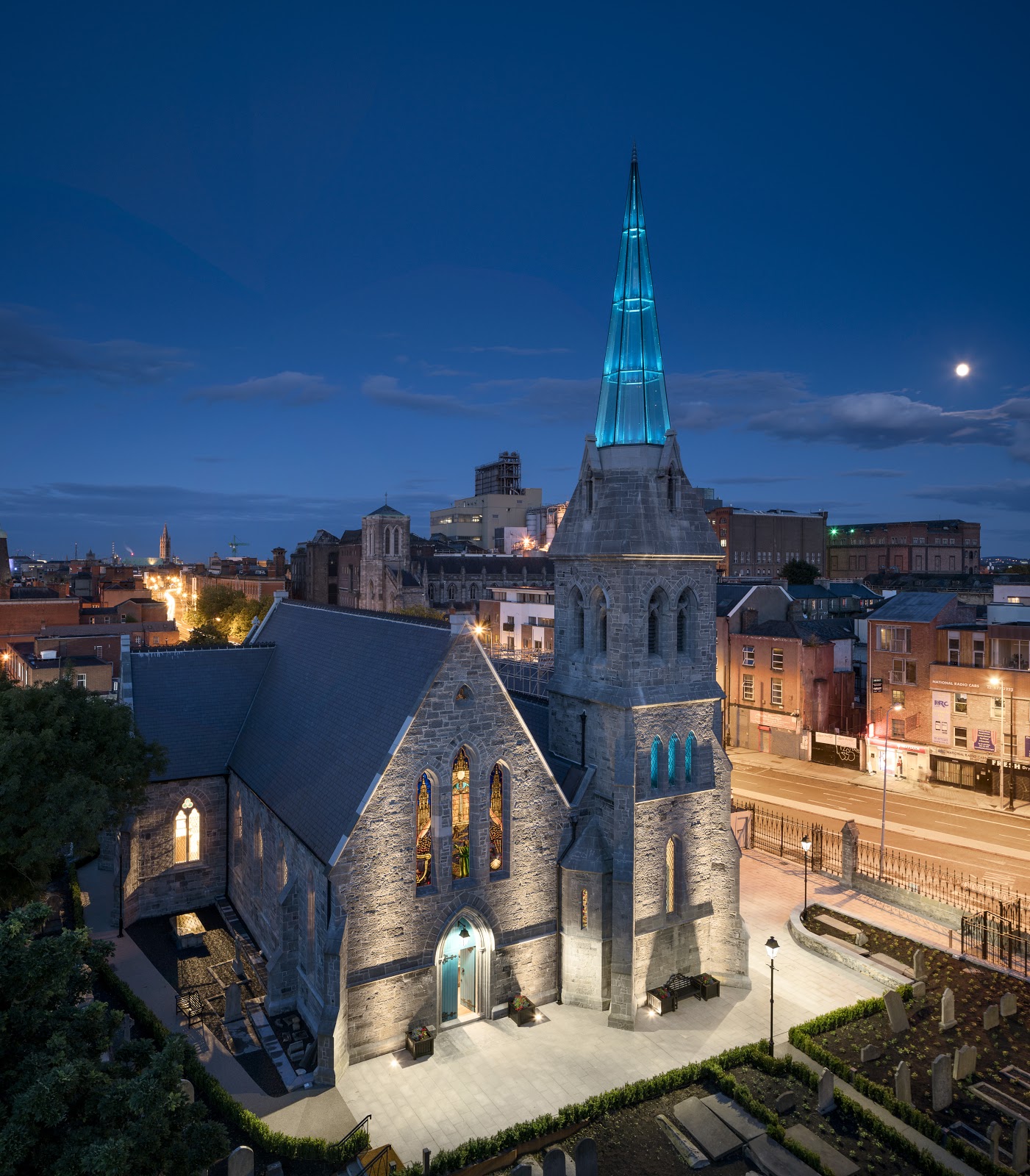
Pearse Lyons Distillery Night Time Shot
Dr. Lyons and his wife Deirdre began the process of creating this wonderful addition to Dublin. In 2016 a new glass spire was in put in place and in 2017 the distillery and visitor centre opened. The visit begins in the beautifully unobtrusive visitor centre which is mostly glass and compliments perfectly its historic surroundings. Here you have interactive displays to enjoy while waiting for your tour to begin. They illustrate the history of St. James Church, The Liberties Dublin, archeological finds during restoration and the rebirth of whiskey distillation in the area.
Our tour with our engaging ‘storyteller’ Bernard started with a film narrated by Dr. Pearse Lyons, a lovely personal touch, which gave us the history and background to the area, church and project which he engineered and completed. Bernard then brought us outside into the graveyard and elaborated on the people who were buried within the church grounds over the centuries. There is still archaeological work continuing but the sense of history extending below you as you look down the hill can be felt. There is also a wonderful view into the storage area for the Guinness brewery which adds to the feeling that you are in a special part of the city.
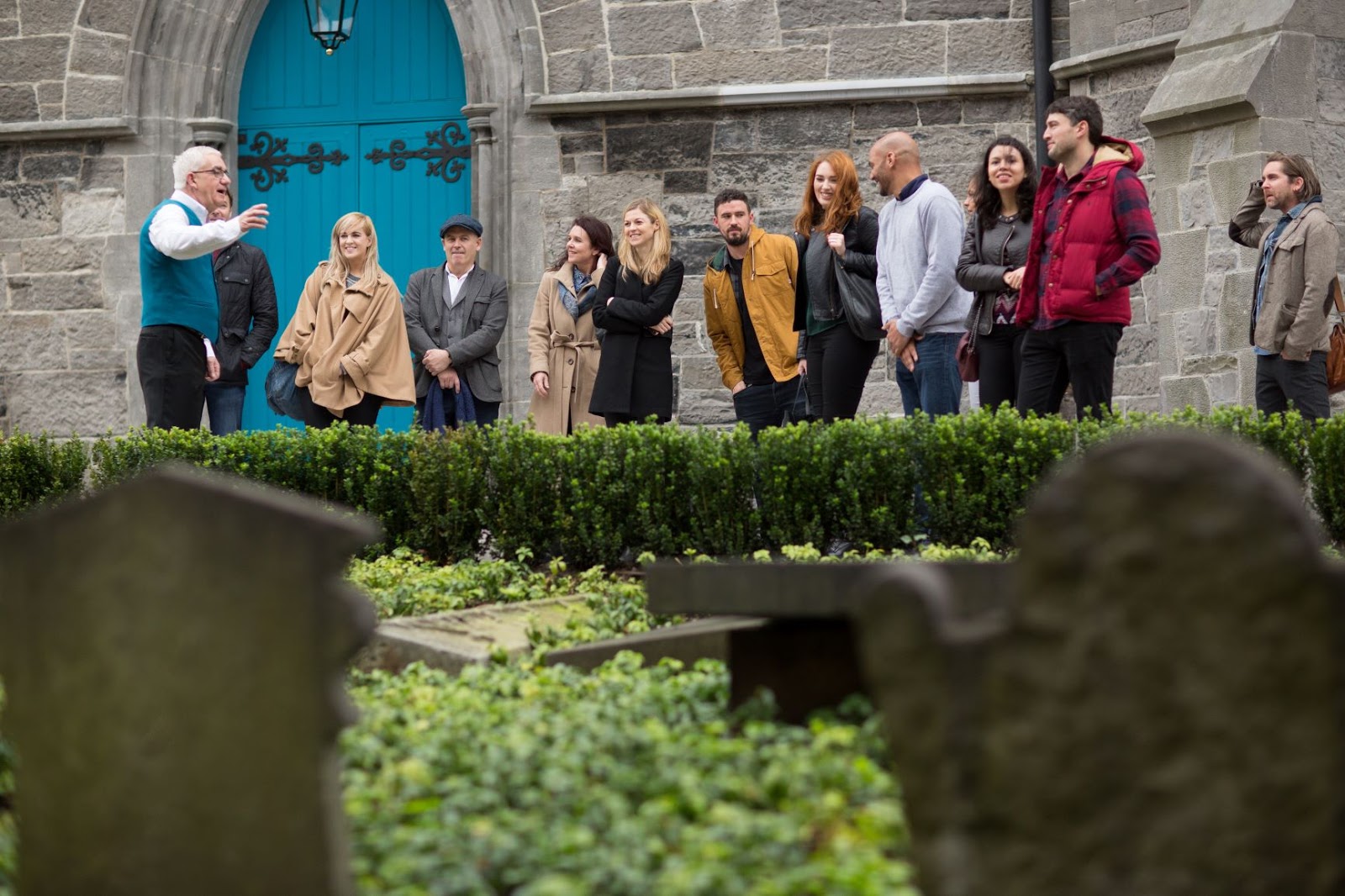
Pearse Lyons Distillery St James Graveyard
You then enter the distillery/church which has been beautifully restored and includes stained glass windows which have been produced specially for the site. Have a look to see if you can find representations of the scallop shell (which is the most iconic symbol associated with the Camino de Santiago). Bernard then brought us through the brewing and distilling process where we were able to feel, taste, see, smell and discover how the master distiller creates 100,000 bottle of whiskey.
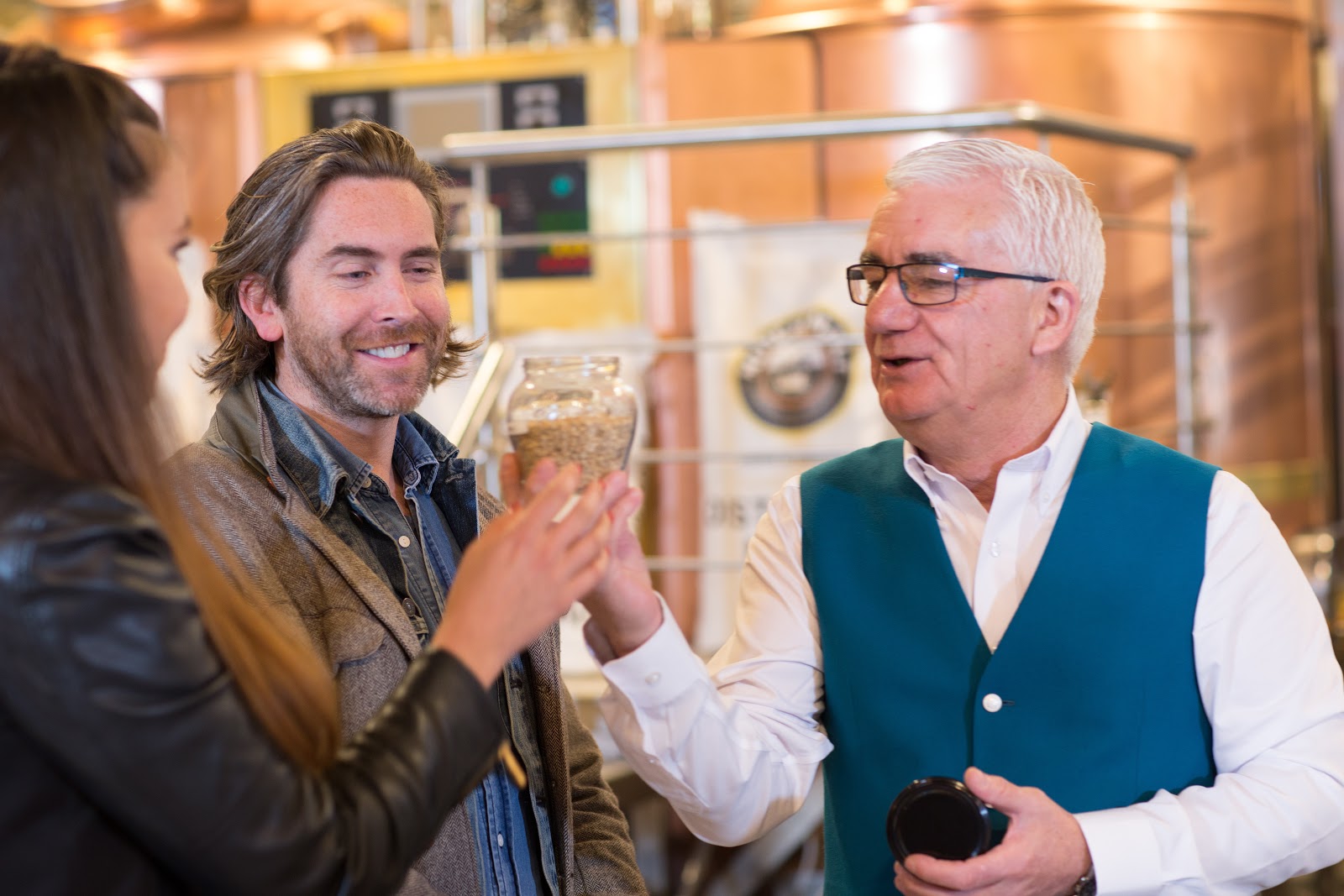
Pearse Lyons Distillery Brewhouse Smell Touch and Taste
The final part of our visit allowed us to enjoy and use our newly accumulated knowledge by tasting a number of different types of whiskeys – which, in the words of the founder, are “a new Irish Whiskey with a Kentucky flare”. Each member of the group had their favourite and it is possible to purchase a bottle if you have acquired a taste for Irish Whiskey, or are a connoisseur and have discovered a new flavour to enjoy.
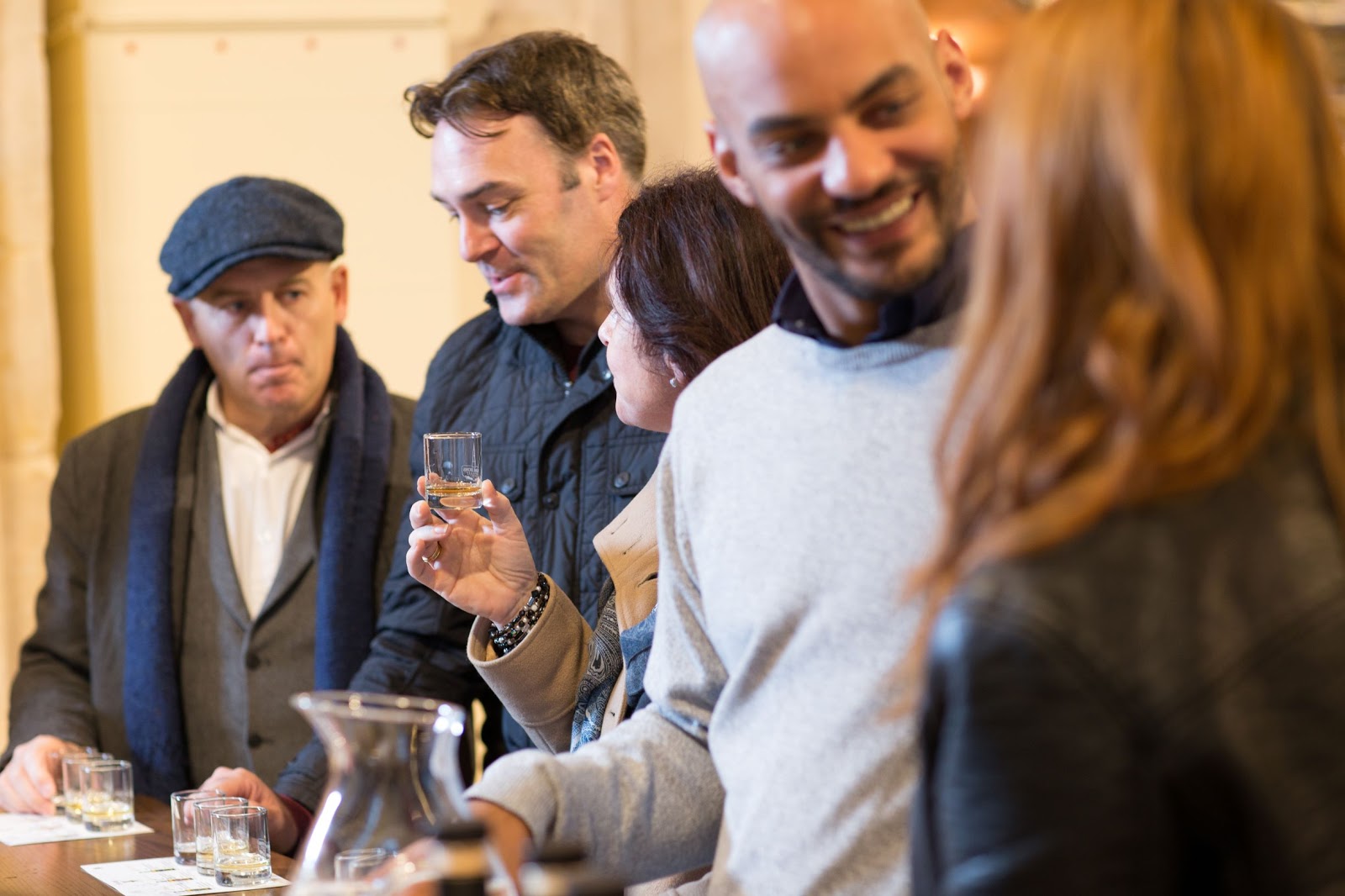
Pearse Lyons Distillery Tasting Bar
The Pearse Lyons Distillery weds together Irish History and Culture and if visiting Dublin why not take some time to investigate this unique place. Or if you’re planning on walking the “El Camino de Santiago” (Way of St. James), why not start in Dublin, and in the ancient tradition get your certificate stamped in St. James Church before setting out for Spain?
By Fiona O’Mahony
